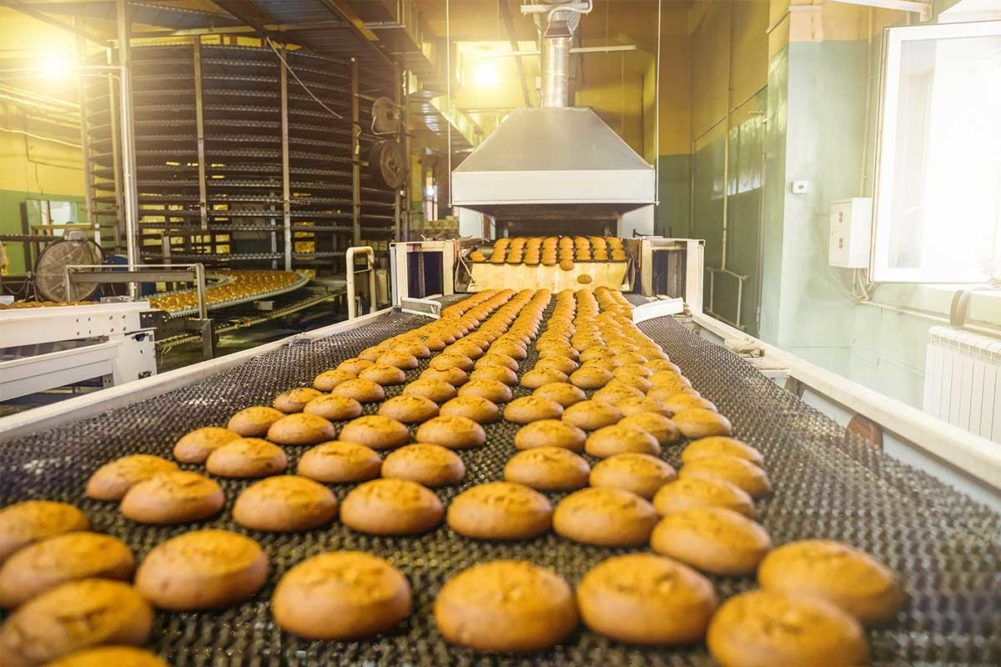Many bakeries have become quite adept at gathering data, but now the emphasis is on investing in data management systems that can sift through a vast sea of statistics and transform them into meaningful reports.
“We’re seeing more spending on the Internet of Things side where they’re able to take that data, make intelligent decisions and create management reports, as well as send information out to remote devices for quick analysis,” observed Dave Watson, baking and snack subject matter expert and project manager with The Austin Co.
Jorge Izquierdo, vice president of market development, PMMI, the association for packaging and processing, said the linchpin of smart manufacturing involves communication.
After collecting data and sharing it with operators and management, he recommended storing it on the cloud where it can be analyzed for the implementation of predictive maintenance and driving other operating efficiencies.
“Predictive maintenance used to be a little like science fiction a few years ago,” he said. “Now many companies are embracing it. You’re not the one analyzing the data directly. You rely on a third party to take the data and provide you the actionable items. Basically, the idea of predictive maintenance is how to increase productivity reliability and reduce the number of unplanned stops.”
Watson echoed that data can be effectively harnessed to optimize production runs and minimize downtime, which are the cornerstones of smart manufacturing.
“When a bakery has a planned downtime event, maintenance can replace parts and equipment, rather than live with emergency-type, downtime situations,” he said.
With its new oven, Fantasy Cookie simplified the operation and ensures that product specifications are maintained throughout the production run. Additionally, the new operation bolstered the speed to market in which the company can take new product concepts from up to 17 days to a few hours, in some cases, suggested Russ Case, chief executive officer for the Sylmar, Calif.-based company.
“The oven automatically self-adjusts, and it doesn’t vary,” he pointed out. “There’s no deviation once we get it set, and then the oven monitors itself. Once we get the baking profile correct on each product, we’re done with it.”
Watson noted today’s hybrid ovens often combine convection, radiant or maybe some direct gas-fired or infrared heat for enhanced versatility. In cookie production, convection has gained more popularity because of product consistency and fewer burners need to be maintained.
“In the old days, many cookie manufacturers relied on a direct-fired oven with four or five zones,” he said. “Now there’s been enough information collected to be able to use convection and other technologies to improve the bake and quality of the product and more. Having the sensors within the individual zones allows bakeries to properly monitor conditions so that the right moisture and the proper temperature conditions are there for optimal baking.”
Sometimes smart manufacturing reflects a shift of attitude within an entire industry. Izquierdo said that happened during the pandemic when remote service became more prevalent because technicians couldn’t travel, or food companies were restricting access to their facilities. PMMI recently released a report on the topic called “Trends in Remote Service and Monitoring” that explores the changes.
“It’s not necessarily new,” he said. “What’s changing significantly is the level of adoption in recent years because of COVID situations, and now, with all these workforce challenges and skill gaps, many companies are relying on remote services to fill those gaps, in many cases.”
Case noted how remote service sped up the startup of its new production line. After the cookie producer had some initial issues with temperature control, Fantasy Cookie reached out to the oven’s OEM, which remotely fine-tuned the software within hours.
This article is an excerpt from the March 2024 issue of Baking & Snack. To read the entire feature on Smart Manufacturing, click here.





